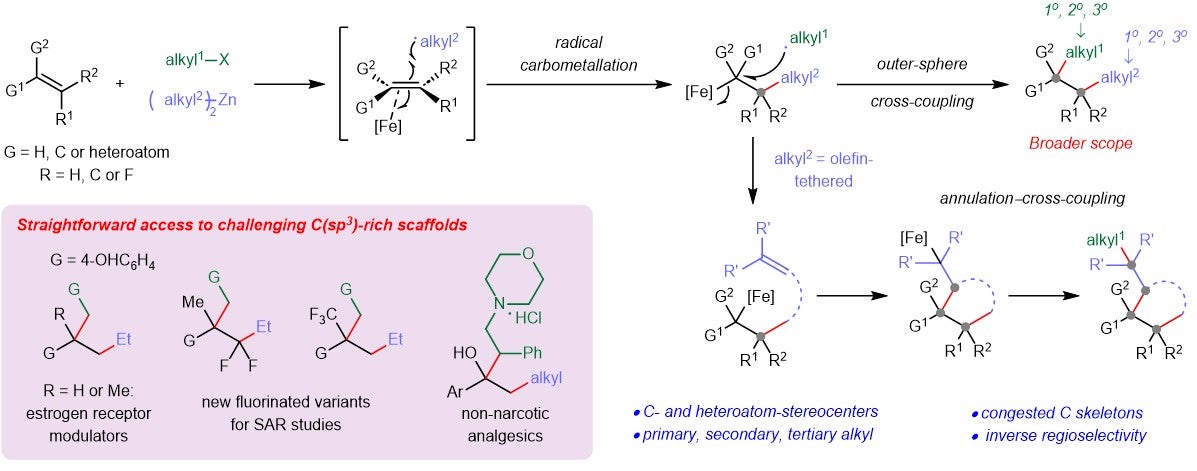Earth-abundant iron catalysis enables access to valuable dialkylated compounds
March 06, 2024National University of Singapore (NUS) chemists have solved a longstanding challenge in the synthesis of congested C(sp3)-rich molecules by developing a new iron-catalysed reaction that generates two alkyl-alkyl bonds in crowded environments.
C(sp3)–C(sp3) bonds are single, strong bonds formed between two carbon atoms. They form the backbones of many biologically active natural products and synthetic molecules. Research has shown that the number of saturated (sp3) carbons correlates with solubility, suggesting that increased saturation leads to enhanced potency and selectivity in drugs. However, developing methods to construct C(sp3)-rich scaffolds is an important but challenging goal in organic synthesis. This is because reactions involving sp3-hybridised substrates are typically inefficient and prone to undesired product formation.
A research team led by Associate Professor KOH Ming Joo, from the Department of Chemistry, NUS have conceived a new strategy that harnesses an earth-abundant (terpyridine) iron catalyst to combine alkenes with sp3-hybridised organohalides and organozinc reagents. This approach allows them to add different-sized alkyl groups to the alkene, resulting in a library of drug-like molecules with congested cores containing either carbon- or heteroatom-substituted stereocenters. The method is useful for creating valuable but challenging C(sp3)-rich molecules. This research is a collaboration with Dr Xinglong ZHANG from the Institute of High Performance Computing, Agency for Science, Technology and Research (A∗STAR) and Professor Patrick HOLLAND from Yale University.
The findings were published in Nature Catalysis.
Prof Koh said, “Our studies suggest that this iron-catalysed dialkylation reaction operates through a unique mechanism, which potentially opens the door to a wider range of transformations and new chemical space. This helps to diversify and broaden the chemical structures of performance molecules.”
“We believe this method will accelerate the synthesis of many natural products and pharmaceuticals in a sustainable manner, especially those that contain densely functionalised alkyl-alkyl linkages,” added Prof Koh.
The research team is leveraging the newly discovered iron-catalysed system to transform other classes of organic starting materials into useful compounds for various applications, including drug development.

Figure: Schematic showing the design of a new iron-catalysed dialkylation reaction that transforms abundant alkenes to prized C(sp3)-rich molecules. [Credit: Nature Catalysis]
Reference
Tan T; Serviano JMI; Luo X; Qian P; Holland PL*; Zhang X*; Koh MJ*, “Congested C(sp3)-rich architectures enabled by iron-catalysed conjunctive alkylation” Nature Catalysis DOI: 10.1038/s41929-024-01113-8 Published: 2024.


